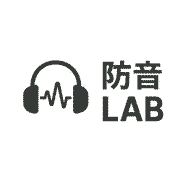Choosing streaming microphones, wondering “dynamic or condenser?”?
Actually, your optimal microphone depends on your soundproofing environment. Expensive condenser mics can paradoxically worsen audio quality with inadequate soundproofing.
This article thoroughly explains microphone selection by soundproofing level with respective advantages and disadvantages.
Basic Differences: Dynamic vs. Condenser#
Dynamic Microphones#
Mechanism: Physical vibration captures sound
- Durable and robust
- Lower sensitivity = picks up close sounds only
- No power required (XLR connection)
- Type used in live performances and karaoke
Representative Models:
- Shure SM58 (classic, ~10,000 yen)
- Shure SM7B (streamer favorite, ~50,000 yen)
- Audio-Technica AT2040 (value, ~15,000 yen)
Condenser Microphones#
Mechanism: Electrically amplifies sound
- Delicate, high quality
- High sensitivity = picks up distant sounds too
- Power required (phantom power or USB)
- Type used in professional studios
Representative Models:
- Audio-Technica AT2020 (entry, ~10,000 yen)
- Blue Yeti (USB popular, ~15,000 yen)
- Rode NT1-A (professional, ~25,000 yen)
Microphone Selection by Soundproofing Level#
Minimal Soundproofing (D-40 or Less)#
Environment:
- Regular room
- Slight acoustic treatment
- External noise audible
- Ambient sounds present
Recommendation: Dynamic Microphone
Reasoning:
- Lower sensitivity ignores distant ambient noise
- Focuses on voice directly in front
- Forgiving of imperfect environments
- Better signal-to-noise ratio
Optimal Models:
- Shure SM58: All-around excellent
- ATR2100x: USB/XLR dual, great value
- Samson Q2U: Budget-friendly alternative
Moderate Soundproofing (D-45~55)#
Environment:
- Vocal booth or well-treated room
- External noise significantly reduced
- Controlled ambient sounds
- Occasional faint intrusions
Recommendation: Dynamic OR Entry Condenser
Dynamic Advantages:
- Still forgiving of occasional noise
- More consistent results
- Less temperamental
Condenser Benefits:
- Noticeably better quality
- Captures vocal nuance
- More professional sound
Decision Point: Test both if possible, choose based on actual results.
Optimal Models:
- Dynamic: Shure SM7B, Electro-Voice RE20
- Condenser: AT2020, Rode PodMic (dynamic character)
Excellent Soundproofing (D-55~65)#
Environment:
- Quality soundproof room
- External noise minimal
- Controlled acoustics
- Quiet baseline
Recommendation: Condenser Microphone
Reasoning:
- Soundproofing adequate for sensitivity
- Quality advantages fully realized
- Professional results achievable
- Captures vocal detail beautifully
Optimal Models:
- Rode NT1-A: Excellent value
- AKG C214: Professional grade
- Neumann TLM 102: Premium choice
Professional Studio (D-65+)#
Environment:
- Professional soundproof room
- Near-silent baseline
- Optimized acoustics
- Controlled environment
Recommendation: Premium Condenser
Reasoning:
- Environment supports highest quality
- Investment justified by results
- Professional standards achievable
Optimal Models:
- Neumann U87: Industry standard (~300,000 yen)
- AKG C414: Versatile professional (~100,000 yen)
- Rode NT2-A: Excellent value (~40,000 yen)
Common Microphone Mistakes#
Mistake 1: Expensive Mic in Noisy Room#
Problem: Condenser picks up all ambient noise Result: Worse quality than cheap dynamic Solution: Match mic to environment, not budget
Mistake 2: Wrong Distance#
Problem: Too close = plosives, too far = ambient noise Solution: Optimal distance varies by mic type (see guide above)
Mistake 3: No Pop Filter#
Problem: P, B, T sounds create pops Solution: $10 pop filter solves this instantly
Mistake 4: Ignoring Room Acoustics#
Problem: Great mic in echoey room = poor results Solution: Treat room acoustics before upgrading microphones
Microphone Accessories#
Essential#
Pop Filter/Windscreen:
- Cost: 1,000-5,000 yen
- Necessity: High
- Eliminates plosives
Boom Arm:
- Cost: 3,000-15,000 yen
- Necessity: High
- Better positioning, desk space savings
Shock Mount:
- Cost: 2,000-8,000 yen
- Necessity: Medium-High
- Reduces desk vibration noise
Helpful#
Audio Interface:
- Cost: 10,000-50,000 yen
- Necessity: Medium (unless USB mic)
- Better sound quality, more control
Cables:
- Quality XLR: 2,000-8,000 yen
- Necessity: Medium
- Reliable connections
Budget Tiers#
Entry Level (Total: ~20,000 yen)#
- ATR2100x USB: 12,000 yen
- Boom arm: 5,000 yen
- Pop filter: 1,500 yen
- Total: 18,500 yen
Quality: Excellent value, professional-capable
Mid-Range (Total: ~60,000 yen)#
- Shure SM7B: 45,000 yen
- Audio interface: 15,000 yen
- Boom arm: 8,000 yen
- Accessories: 5,000 yen
- Total: 73,000 yen (slightly over)
Quality: Professional streamer standard
Premium (Total: ~150,000 yen)#
- Rode NT1-A: 30,000 yen
- Focusrite Scarlett 2i2: 20,000 yen
- Professional boom: 15,000 yen
- Acoustic treatment: 50,000 yen
- Monitoring: 25,000 yen
- Total: 140,000 yen
Quality: Studio-grade results
Testing and Verification#
A/B Comparison#
Test Protocol:
- Record sample with current setup
- Make one change
- Record identical sample
- Compare directly
- Keep improvement, revert if worse
Changes to Test:
- Different mic types
- Positioning variations
- Acoustic treatment additions
- Software filter adjustments
Viewer Feedback#
Valuable Metrics:
- Audio quality comments
- Retention during talking segments
- Comparison to other streamers
- Direct requests for improvements
Conclusion#
Streaming microphone selection requires matching equipment to environment:
- Assess your soundproofing first
- Choose mic type accordingly (dynamic for noisy, condenser for quiet)
- Invest in acoustic treatment alongside mic
- Use proper technique and positioning
- Test thoroughly before committing
Quick Decision Guide#
Your Room:
- Noisy/Untreated → Dynamic mic (SM58, ATR2100x)
- Moderately treated → Dynamic or entry condenser
- Well soundproofed → Quality condenser (NT1-A, C214)
- Professional studio → Premium condenser (U87, C414)
Great audio results from environment + equipment + technique combined. Don’t expect microphones alone to overcome poor room acoustics. Invest holistically for optimal streaming audio quality.
Remember: “Good enough” audio quality is achieved surprisingly affordably with smart room treatment and technique. Save money for other content improvements rather than over-investing in microphones beyond environment capabilities.
